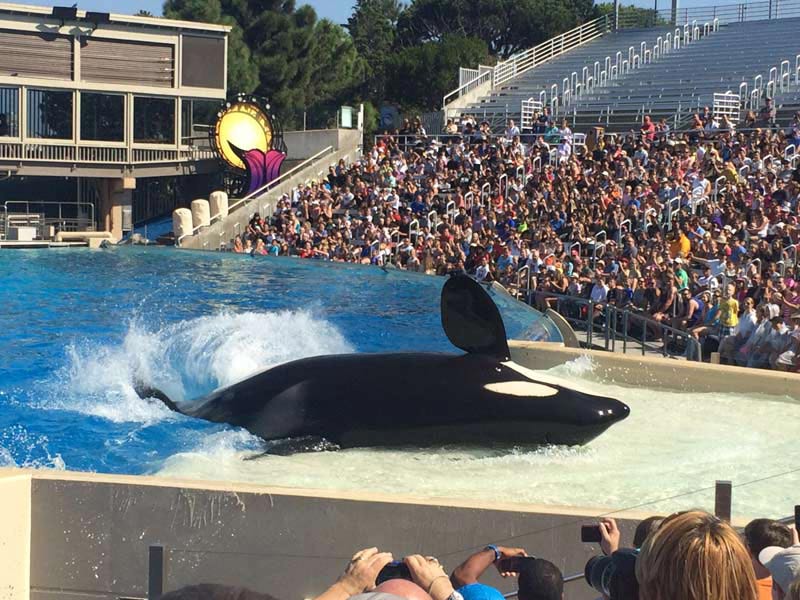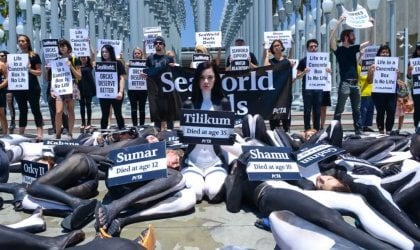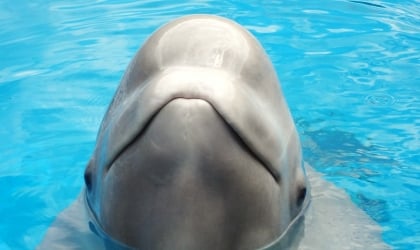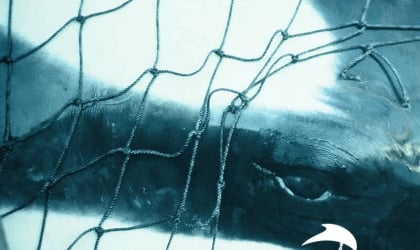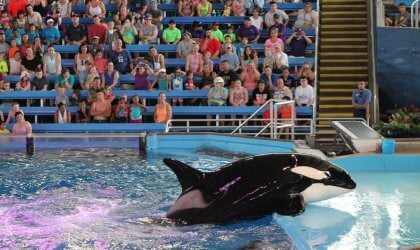It’s business as usual for SeaWorld.
Yet another animal has died under SeaWorld’s watch, bringing the embattled theme park’s death toll to four large marine mammals in just four months. Three of the deaths occurred at SeaWorld San Antonio. Dart, a male dolphin, was the latest to die while kept in captivity.
R.I.P., Dart: Died February 2016
BREAKING: Pacific white-sided dolphin named Dart has just died at #SeaWorld San Antonio. He was only 12-years-old. pic.twitter.com/0gEJnj8cJh
— PETA (@peta) February 7, 2016
This dolphin is the fourth cetacean to die prematurely at SeaWorld San Antonio since July. Just like many of the dolphins, orcas, belugas, and walruses who died before him, he never knew the world outside SeaWorld’s tiny concrete tanks, never had the chance to swim freely with his family pod, and never got to feel the ocean currents.
R.I.P., Betsy: Died January 2016
Betsy was 1 of 12 Commerson's dolphins captured from the wild in 1983. Half were dead within a year, some within days. #SeaWorld
— PETA (@peta) January 25, 2016
Betsy was recently relocated from SeaWorld San Diego, along with two other “longtime companions,” SeaWorld said on its Facebook page.
Posted by News 13 on Tuesday, January 19, 2016
Though Betsy lived to a mature age for a Commerson’s dolphin—an anomaly for an animal held at SeaWorld, which has a history wrought with premature animal deaths—the circumstances surrounding her death are troubling. Days before she died, she was transferred from SeaWorld San Diego to SeaWorld Orlando, a transport that was undoubtedly hard on the older animal. Betsy was reportedly stolen from her ocean home in 1983, along with 12 other Commerson’s dolphins, half of whom died within a year of captivity. SeaWorld recently announced that it will no longer keep Commerson’s dolphins in captivity, but 20 have reportedly already died in its care over the last 30 years. Hopefully, the remaining Commerson’s dolphins at SeaWorld will be the last to experience the abusement park’s concrete tanks.
R.I.P., Unna: Died December 2015
BREAKING: Young orca, Unna, has just died at #SeaWorld after suffering from a fungal infection for months. pic.twitter.com/sKEalGJ5ax
— PETA (@peta) December 22, 2015
Unna, an 18-year-old orca imprisoned at SeaWorld San Antonio, died after prolonged suffering caused by the fungal infection candida. She was the 38th orca held by SeaWorld to die far short of her maximum life expectancy, which can be more than 100 years for female orcas in the wild. Her “life” in captivity consisted of being taken away from her mother just before her sixth birthday, being impregnated when she was only 8 years old, giving birth to a stillborn calf, and being so deprived of enrichment and opportunities to engage in natural behavior that she obsessively picked at the paint on the bottom of SeaWorld’s show-pool floor until her face became badly injured.
R.I.P., Stella: Died November 2015
BREAKING: She was only two years old & could have lived DECADES longer. This isn’t the first young beluga SeaWorld lost this year. http://peta.vg/1o3d
Posted by PETA (People for the Ethical Treatment of Animals) on Monday, November 16, 2015
Stella died at SeaWorld San Antonio at just 2 years old, well short of a beluga’s natural life expectancy of up to 50 years. Her death added to a tally of at least 58 beluga deaths at SeaWorld locations. SeaWorld and other aquariums have proved again and again that belugas cannot be bred successfully in tiny concrete tanks, where they’re denied everything that is natural and important to them.
Disturbing Pattern in Captivity
Thirty-eight orcas and at least 58 belugas have died on SeaWorld’s watch, along with more than a hundred dolphins. Reports indicate that another dolphin at SeaWorld San Antonio named Betty is currently being treated for a possible infection.
Though SeaWorld’s website claims that “there are no apparent connections” between the recent deaths at its San Antonio facility, the high number of premature and unusual deaths there and at the other SeaWorld locations points to a serious common denominator: captivity.
What You Can Do
Please join us in letting SeaWorld know that the only way it can salvage its business is by retiring the animals to coastal sanctuaries.

